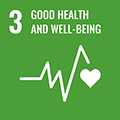Effective healthcare provision relies on understanding how factors such as illness and age underpin a patient’s progress through the healthcare system.
A new suite of statistical models developed in Queen’s University Belfast addresses this major challenge through novel front-end integration of data analytics. These models provided government officials and healthcare managers with the tools they needed to set policy and allocate resources in both normal and emergency circumstances:
Covid19 Alert level setting (Government policy): Data analytics informed local and national coronavirus alert level setting.
Staff deployment (Healthcare Management): Model-driven changes for shift times in the Ulster Hospital Belfast Emergency Department, resulting in a 14% reduction in waiting times to under 60 minutes for an additional 10,000 patients in one year.
Research Challenge
CREATING TIME-EFFICIENCIES IN HEALTHCARE MANAGEMENT
Fully understanding the origin of delays in triage and time-critical treatment for patients has been the major issue faced by healthcare systems worldwide for decades. For example, the problem of seasonal changes in NHS patient waiting times leads to regular national news headlines during the winter months. The origin of this is twofold:
Extrinsic- gaps in our knowledge of the factors driving prevalence/transmission of disease
Intrinsic- improper understanding of causes of delays in patient transit through hospitals
In 2020 this problem was thrust to the forefront of the public agenda due to the Covid-19 pandemic. Inefficiencies and lack of reserve capacity have required the implementation of lockdowns and major disruptions to daily life to protect the NHS from surges in hospitalisations. These decisions have been informed by modelling disease transmission to best manage patients entering the healthcare system.
Our Approach
APPLYING INNOVATIVE DATA ANALYTICS IN DISEASE TRANSMISSION AND PATIENT FLOW
Over the last two decades, researchers at Queen’s have focused heavily on implementing cutting-edge data analytics at the front end of these models to increase their overall efficiency and efficacy:
Social Network Analysis
Modelling disease transmission in a mobile population
Understanding how movement/travel can lead to the spread of diseases is critical for understanding how well healthcare systems can cope with evolving disease progression in a dynamic population.
Social Network Analysis (SNA) is ideally suited to interrogate such dynamic systems in a quantitative manner. By creating a map of the interactions that establish a network, SNA identifies the components that support and influence behaviours on this network.
Coxian phase-type distributions models
Patient flow through healthcare systems
Queen’s researchers have been spearheading the mission to find ways to interrogate the enormous dynamic data sets that healthcare systems produce.
The research led to the creation of a suite of statistical data analytics models by the Mathematical Sciences Research Centre at Queen’s, which have been applied to:
- model disease prevalence and spread in the general population, and
- model hospital resource demands via capturing correlations in patient waiting time, disease progression, and survival.
This research directly led to the development of the Northern Ireland Covid19 model, which has significantly impacted government policy. Furthermore, the hospital resource models have been implemented and verified as effective.
The research performed by Queen’s researchers over the last two decades has been crucially important in establishing a regionally leading, and nationally important, modelling capability that has contributed directly the UK’s preparedness to tackle epidemics, pandemics and healthcare management.
What impact did it make?
DEVELOPING A REGIONALLY LEADING, AND NATIONALLY IMPORTANT, MODELLING CAPABILITY FOR HEALTHCARE MANAGEMENT
The application of these models and the input by Queen’s researchers into new policy has measurably improved the management of hospital and healthcare resources in Northern Ireland and the rest of the UK.
The underpinning research performed by Queen’s researchers over the last two decades has been crucially important in establishing a regionally leading, and nationally important, modelling capability that has contributed directly the UK’s preparedness to tackle epidemics, pandemics and healthcare management. This has been asserted by feedback from Northern Ireland’s Chief Medical Officer (CMO) who asserted:
“The previous research work has informed new policy in measuring the effectiveness of Non-Pharmaceutical Interventions (NPIs) including social distancing measures, modelling the pandemic, the hospital admissions and length of stay and early alerts in the symptoms models which all are components that feed into the Stochastic SIR Covid19 Northern Ireland model”.
The work has also informed best practice for International Travel Corridors and Travel Advice methodology in the context of Green, Amber and Red countries.
The Head of National Alerting and Assessment for the UK’s Joint Biosecurity Centre emphasises the direct nature of the work stating
“the Alert Level update is read every week by all four Chief Medical Officers and directly informs their decision making on the COVID-19 pandemic. Decisions on the national response to COVID-19 have been built directly on the evidence from (Queen’s).”
These unequivocal statements from the CMO for NI and the Head of National Alerting and Assessment for JBC demonstrate how crucially important Queen’s research was in the national response to COVID-19.
Our impact
Impact related to the UN Sustainable Development Goals
Learn more about Queen’s University’s commitment to nurturing a culture of sustainability and achieving the Sustainable Development Goals (SDGs) through research and education.








